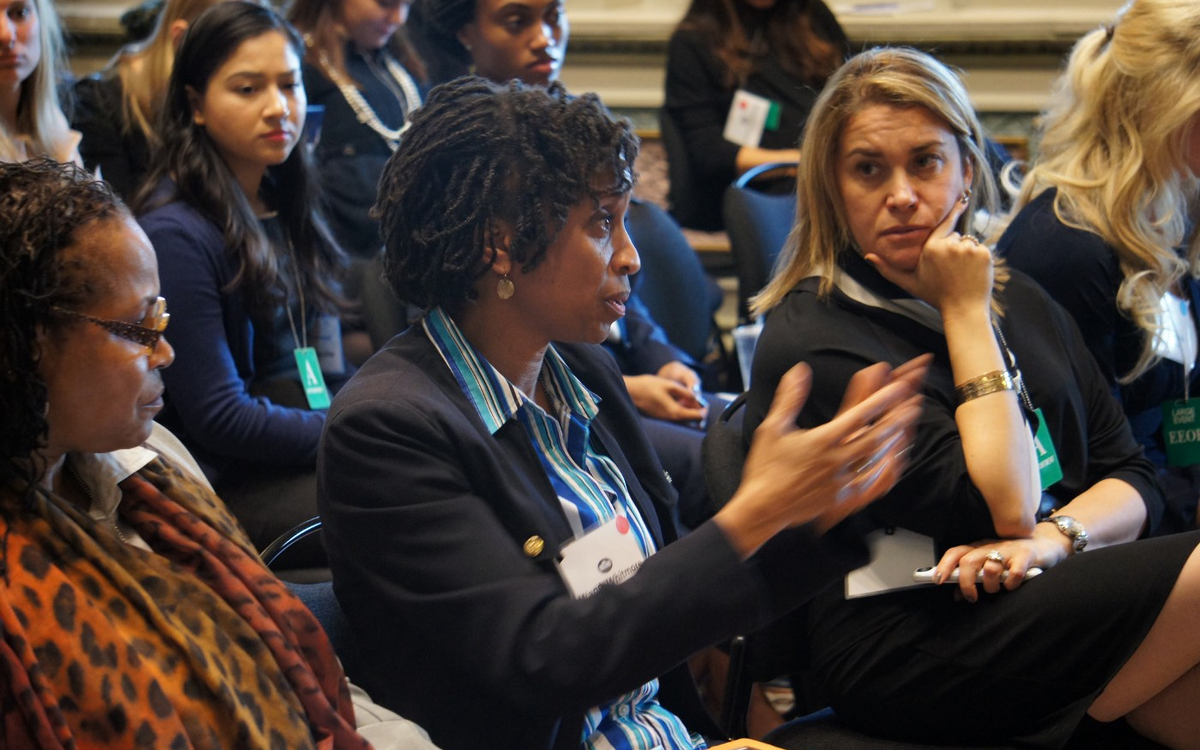
Where Are Harvard’s Female Professors?
Across all Harvard tenured faculty, three times as many are male as female.
Motivation
Last fall, the Harvard Open Data Project, a student-faculty group that aims to increase transparency on campus using public Harvard data, published an article (https://medium.com/harvard-open-data-project/gender-disparity-in-harvard-faculty-b253ae949a56) on gender disparity within the Faculty of Arts and Sciences at Harvard. In the investigation, Emma Ling ’20 revealed several disconcerting trends regarding gender disparity, including a wider gender gap within higher-ranked faculty than among lower-ranking positions and notable imbalances across various fields. The results motivated an initiative to analyze gender disparity at Harvard in comparison to other top universities across the United States with the goal of digging even deeper into the issue, specifically with regard to faculty rank. Rank is one of many factors that influences gender disparity among faculty, but it often seems to be underestimated in administrative efforts to combat this disparity. Thus, the findings serve as a call to action not only for Harvard but also for other top universities to pursue gender equality in faculty with special attention to high-ranking positions.
Data Collection Methods
The basis of the study included published data on faculty diversity from several of the top universities in America: Brown, Columbia, Cornell, Dartmouth, Harvard, MIT, Princeton, Stanford, the University of Pennsylvania, and Yale. This information mostly came in the form of annual faculty reports, as well as some of the data published in Common Data Set reports (https://oir.harvard.edu/common-data-set), which are standardized across all American universities.
The term “tenured faculty” is used synonymously with full professors, and “tenure-track” faculty refers to assistant and associate professors. The categories of male and female are based on categories within university-specific datasets and Common Data Set reports. Clearly, this gender classification poses a serious limitation to the data, leaving out faculty who identify as non-binary. Even in the most recent datasets from 2017 through 2018, the gender of the faculty is only categorized within this binary. Therefore, the following trends are limited by incomplete data in this regard, highlighting the need for future data collection methods that better capture the full diversity of the faculty.
Top universities average only 34 percent female in full-time faculty
Based on the most recent data in their Common Data Set reports, every one of the top 10 universities that were investigated showed a percentage of female full-time faculty members below 45 percent. In particular, MIT has only 25 percent female full-time faculty members out of over 1,250 full-time faculty members. Stanford has a proportion nearly as skewed at 27 percent female full-time faculty. Almost all other schools in the study have 30–40 percent female full-time faculty members. Only Columbia breaks past the 40 percent mark at 43 percent.
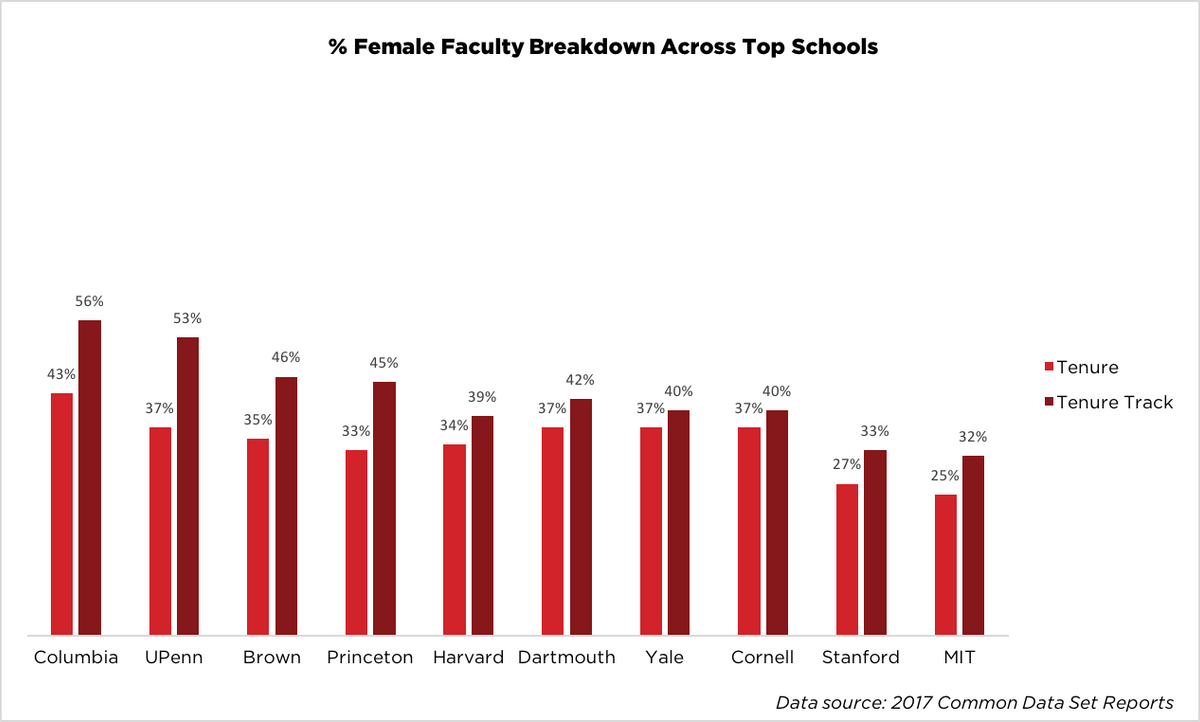
What is more striking is that the average for female full-time faculty members is only 34 percent while these female part-time faculty members average 51 percent. This distinction suggests that looking at the overall gender gap in faculty might be misleading, because the gap is significantly worse for full-time faculty than for part-time faculty. The disparity may stem from issues such as paid maternity leave, which is still more commonly utilized than paid paternity leave, potentially leading to more females taking on part-time roles over full-time roles. Another consideration is that seeing more full-time female faculty members. This suggests that recent efforts to close (https://www.wsj.com/articles/colleges-move-to-close-gender-gap-in-science-1506331801) the gender gap among faculty at top universities — such as increasing financial aid for women and minorities, and hiring more female full-time faculty members — are starting to make a positive difference. However, special attention must be paid to maintaining the increased female representation across the transition from part-time to full-time faculty.
Gender disparity worsens as faculty rank increases
The next section of the study looks at the gender breakdown in various faculty ranks within select top American universities. Investigating this topic also underscored the dearth of faculty-related data provided by most of these universities and the difficulty of accessing them. Only Columbia, Brown, Princeton, and Stanford offered enough consistent data for comparison.
At Columbia, a huge gender disparity is seen in the subset of faculty who have tenure or “Tenure of Title,” with male faculty dominating at 73 percent and 89 percent, respectively. The disparity persists to a lesser extent among faculty who are “Eligible for Tenure.” Although male faculty still have the majority, the gender gap is significantly narrower than the former two categories. The only category in which female faculty hold the higher proportion (a slight margin of 53 percent) is “Non-Eligible for Tenure.”
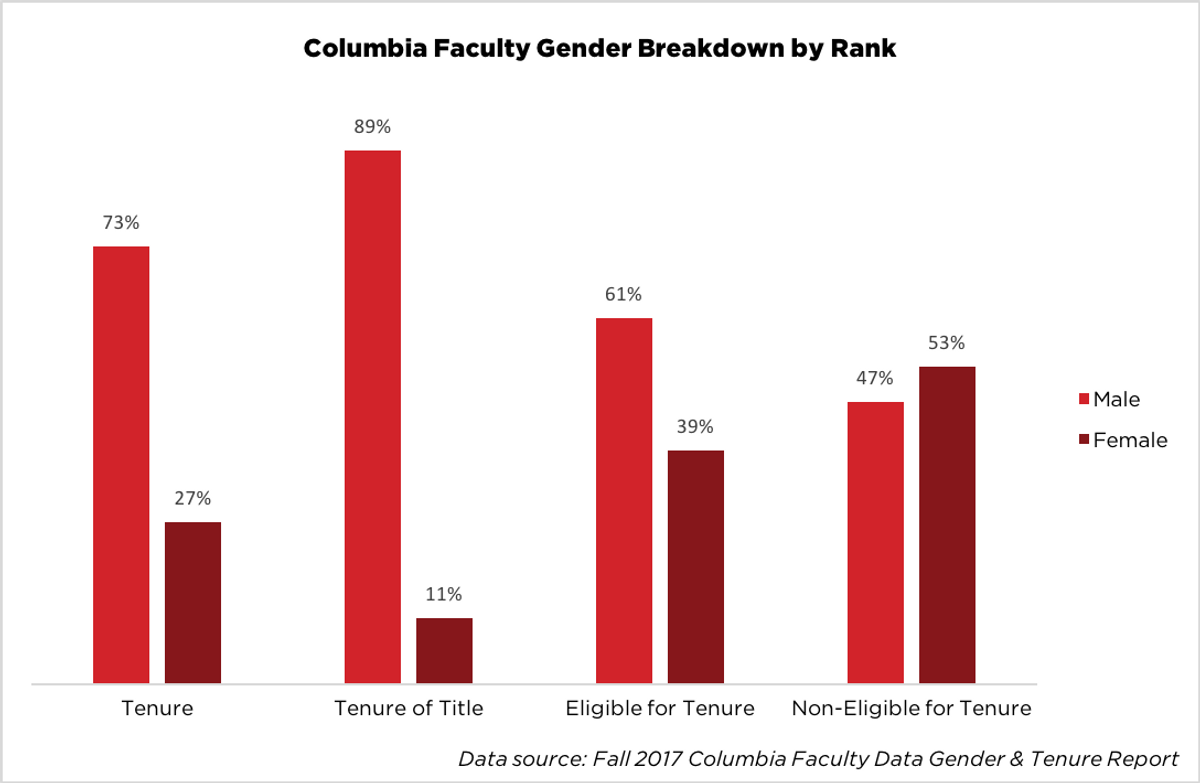
At Brown, male faculty dominate 60 percent, 66 percent, and 75 percent of its Assistant Professors, Associate Professors, and Full Professors, respectively. This statistic may seem like just another testament to gender imbalance among university faculty at large. However, an important characteristic of this disparity is that the higher the rank, the greater the difference between male and female faculty proportions.
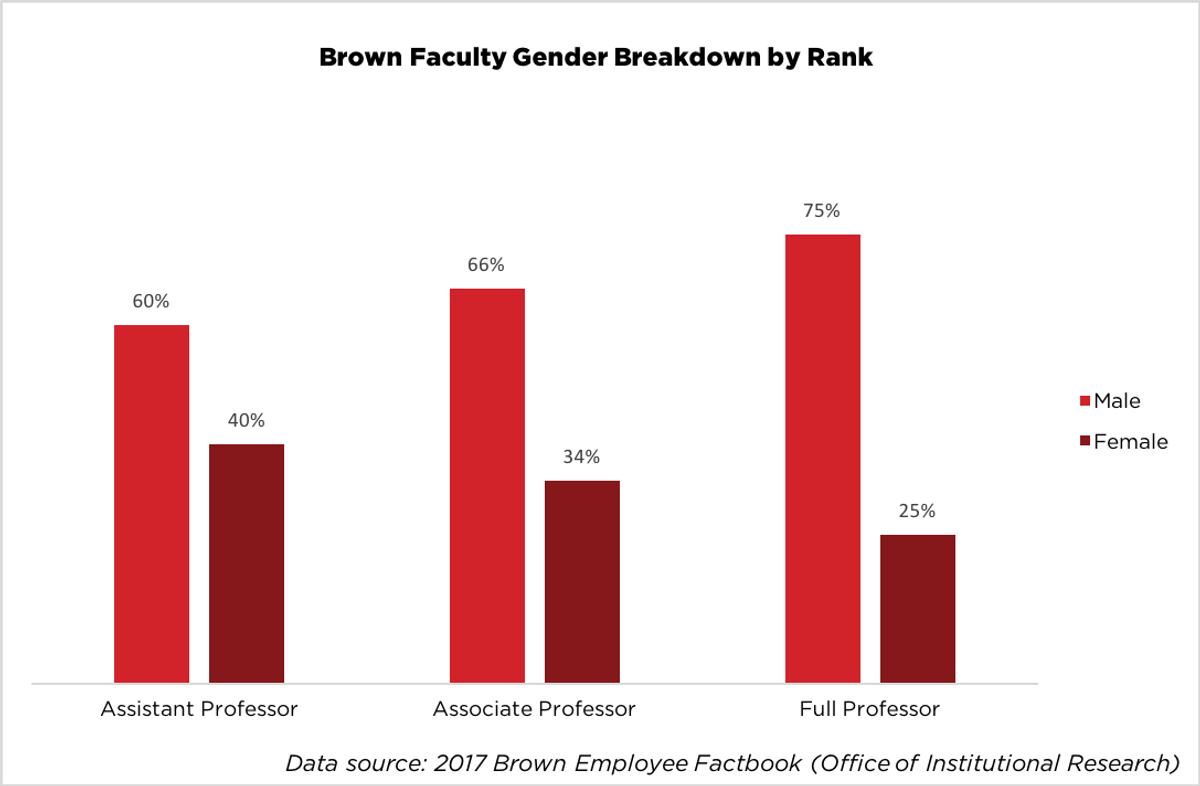
Princeton’s data on the gender makeup of its Assistant Professors, Associate Professors, and Full Professors is uncannily similar to Brown’s. The numbers were almost identical, with 61 percent, 57 percent, and 75 percent of male faculty compared to Brown’s 60 percent, 66 percent, and 75 percent for the three respective categories. Again, as rank increases, so too does the proportion of male faculty in that position.
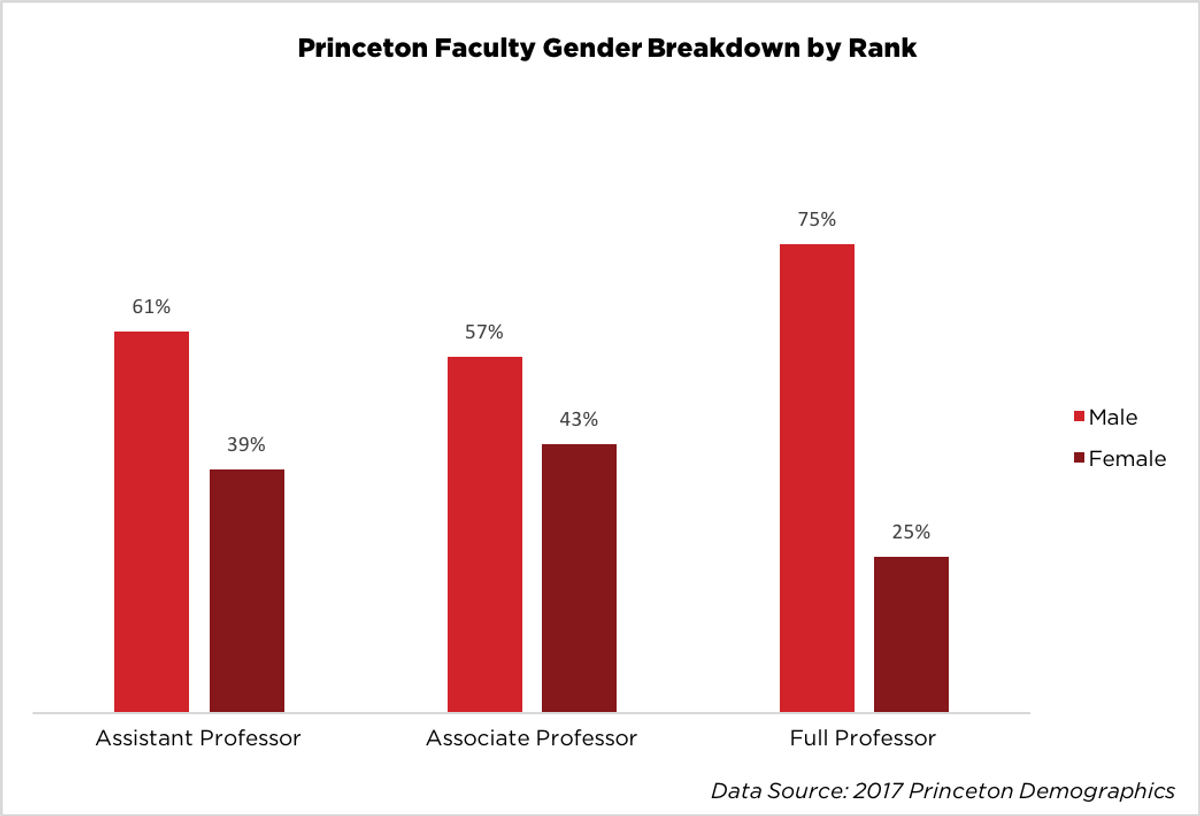
At Stanford, male faculty hold 77 percent of tenured positions and 63 percent of “Tenure Track” positions. Male faculty also dominate in Assistant Professor, Associate Professor, and Full Professor roles. Thus, all four of the aforementioned top schools show not only a consistent gender disparity in faculty, but also one that worsens as rank increases.


A closer look at gender disparity within Harvard faculty
Finally, the study delves deeper into Harvard, looking at the faculty gender breakdown within the undergraduate versus graduate schools as well as within their different departments. As shown in the chart below, the proportions of male and female faculty are very similar for FAS and professional graduate schools. Across all Harvard tenured faculty, there are three times as many males as females. The male-female ratio for tenure-track faculty is somewhat lower at about three-fifths being male, as opposed to three-fourths.

The gender gap is significantly wider for tenured faculty than tenure-track faculty for both FAS and professional schools, aligning with the trend of decreasing female proportion in higher ranks at other top-notch universities. The closest indication of gender balance was seen in tenure-track faculty within FAS. Across all the schools, the university stands at a disappointing average of 25 percent of tenured faculty and 39 percent of tenure-track faculty who are female.

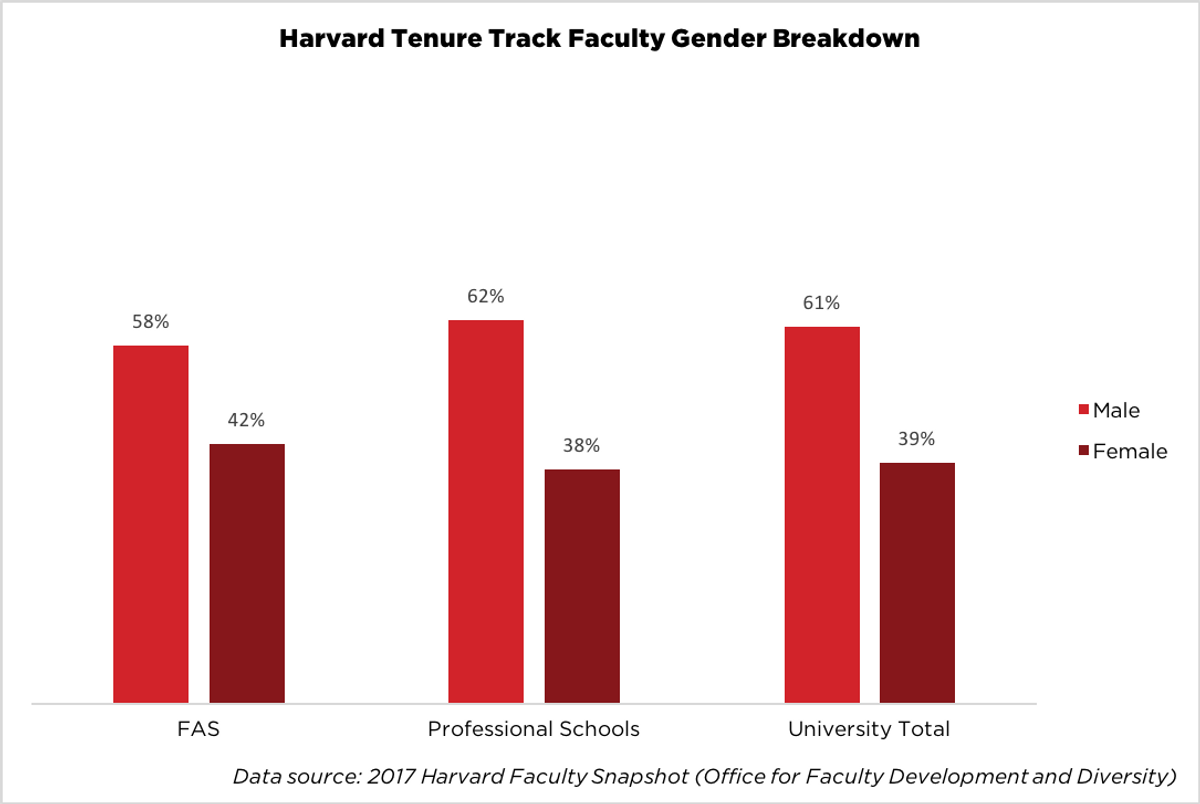
It is also noteworthy that the gender disparity is worse within Sciences and Engineering departments than Arts and Humanities departments, as revealed in a previous HODP investigation (https://medium.com/harvard-open-data-project/gender-disparity-in-harvard-faculty-b253ae949a56). Among tenured and tenure-track faculty at FAS, Engineering consistently shows the lowest percentages of female faculty, while the highest percentages of female faculty are in Arts and Humanities.
Recently, Harvard FAS reached (https://www.thecrimson.com/article/2018/4/13/fas-gender-parity-sciences-faculty/) gender parity in tenure-track faculty in the sciences as of late 2017. Ideally, this progress will follow in the other three FAS departments as well. But even within the sciences, female tenured faculty in the sciences are disappointingly few (16 percent) despite the promising number of female tenure track faculty (46 percent).

Within the professional schools, there are also interesting differences between the percentage of females in tenured and tenure-track faculty. For example, Law has the lowest percentage of female tenured faculty (21 percent) but the highest number, almost triple, of female tenure-track faculty (60 percent).
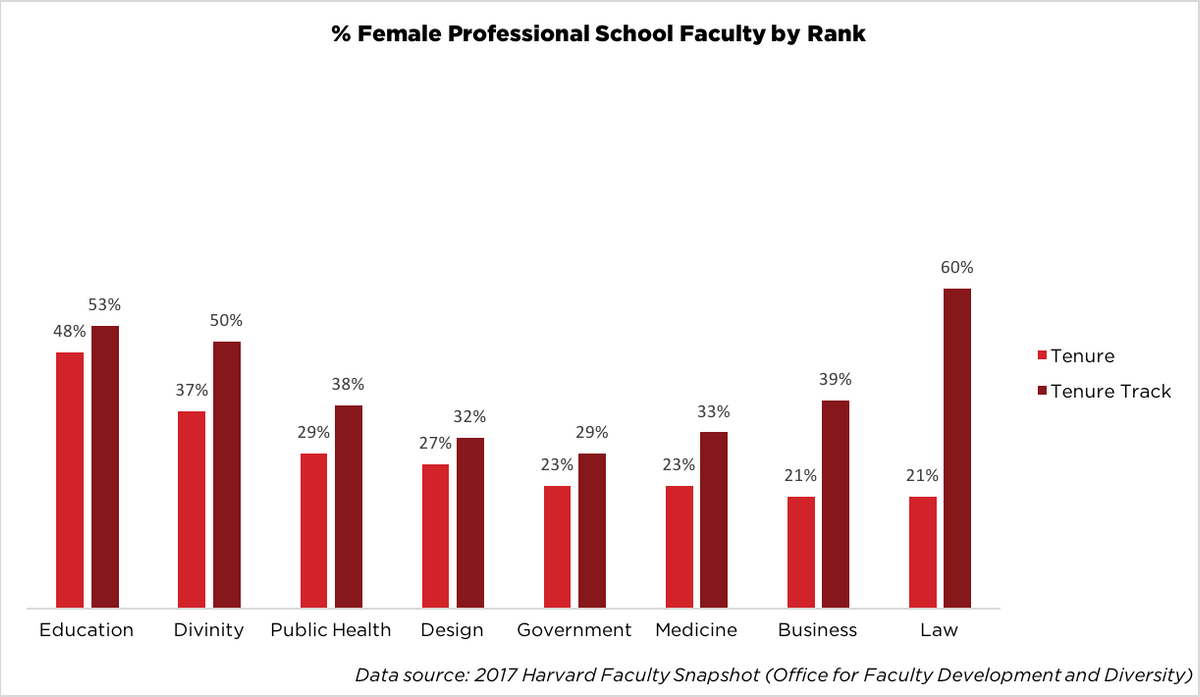
Overall, each of the schools exhibits a strikingly similar disparity in the percentage of female tenured faculty and tenure-track faculty. FAS averages 24 percent and 41 percent, respectively, while the professional schools average 29 percent and 42 percent, respectively. In the process of going from tenure-track to tenured, the percentage of female faculty drops by almost half.
Hope for closing the gender gap with incoming faculty
On a more positive note, the efforts to increase female representation in faculty seem to be moving in a positive direction. In the charts below, Associate Professorship corresponds to promotion while still in a tenure track position and Ladder Faculty corresponds to receiving full tenure. The percentages of male and female candidates for associate professorship are almost on par not only in standing for review, but also in successful promotions. For Associate Professorship in particular, the proportions of male and female faculty members who receive the promotion are close to equal, and this pattern will likely continue.
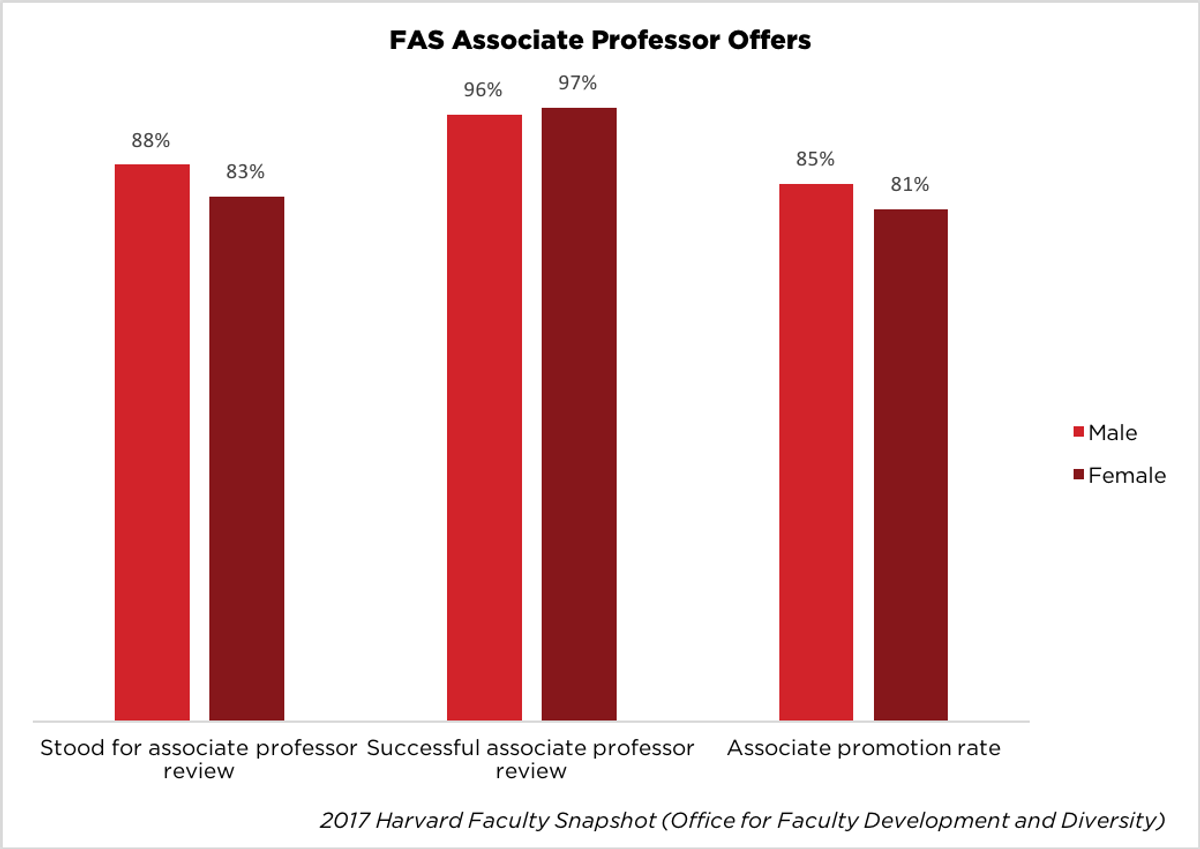
A more significant difference can be seen in the percentage of male and female faculty members who stand for tenure review, with a 13 percent drop in the number of female faculty who stand as compared to male faculty. This difference could be correlated with the imposter syndrome effect (https://www.scientificamerican.com/article/what-is-impostor-syndrome/), which may cause female faculty members to feel less confident in their abilities than their male counterparts even though their successful promotion rates are comparable. This vicious cycle could contribute to less promotions for female faculty members; male faculty members receive tenure at a rate 10 percent higher than that of female faculty members. However, this difference is much smaller than the current gap in tenured faculty, leaving room for optimism that in the near future Harvard faculty will reach gender parity, especially in tenured positions.

Gender disparity must be considered in context of rank
At Harvard, both within FAS and the professional schools, there is not only a significant gender gap in faculty but also a gap that widens as rank increases. Hence, simply assessing the total number of male faculty members versus female faculty members might give the wrong impression that these proportions are common across all positions, tenured or tenure-track.
Whereas males dominate the faculty at top American universities, an important aspect of this gender imbalance is that there is even less female representation in the higher-up faculty ranks. Universities need to be mindful of this distinction during both recruiting and promotion in order to prevent female faculty from being crowded out of senior positions. Moreover, it is worrisome that only Brown, Columbia, Penn, Stanford, and Harvard publish sufficient, easily accessible data for this study among the ten top schools of interest, preventing a more comprehensive analysis of the male-female ratio in tenured and tenure-track faculty. Such lack of data suggests a lack of transparency at top American universities regarding faculty diversity; in fact, the Common Dataset, which universities are legally required to publish was the only data that was common to all the listed schools. Ultimately, future attempts to strive for gender balance in faculty must come hand-in-hand with, or even be fueled by, more publicly available knowledge about the gender demographics of university faculty.
